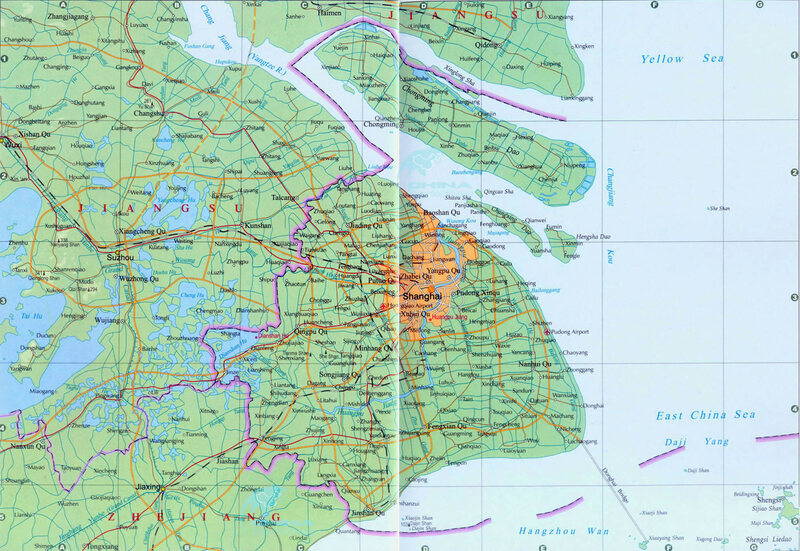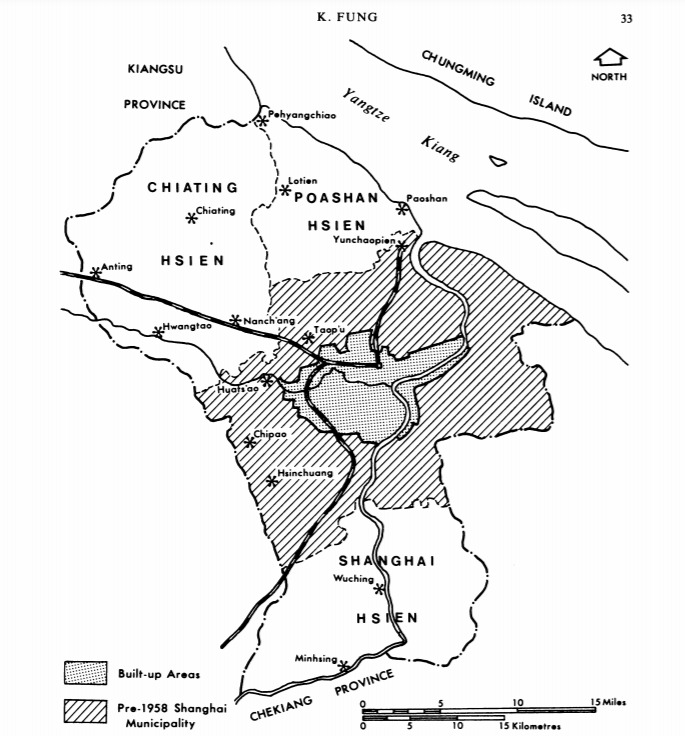A "Parasitic" City: Shanghai During the Great Leap Forward and the Cultural Revolution 1958-1976
Following the split with the Soviet Union near the end of the 1950s, China abandoned its previous Soviet-influenced focus on large cities. Mao Zedong, the Chairman of the Chinese Communist Party, now stepped up his anti-urban rhetoric. Under this new paradigm, Shanghai was cast as a "Parasitic" city that consumed but did not produce and was fundamentally tainted by its capitalist history. As a result, Shanghai's urban planning was placed under the control of various central government ministries, who would prioritize national development over local growth. Unfavorable taxation policies drained Shanghai's revenues in order to fund work in other parts of the country.
The suspicion of densely populated cities that dominated during the Great Leap Forward motivated the implementation of spatial "evenization," where people and industrial capital were moved out of cities and into the countryside. To this end, plans for satellite cities around Shanghai were revived. However, rather than being used to reduce urban congestion, as they were previously, these satellite towns were intended to draw out the urban population of Shanghai like poison from a wound, reducing the concentration of educated young people and technicians in the city. This does not appear to have worked, as Shanghai's population continued to grow during this period. A vital part of the plan for these satellite towns was the construction of railways in order to facilitate the transportation of people and goods to and from Shanghai. Of the twelve satellite towns planned, the town of Minhang was the first to be built, and was the only one to ever receive significant attention and investment from the central government- at least in the immediate period.
Minhang possessed a variety of advantages that made it a natural choice for the first satellite town. It was only a short distance from Shanghai, and it had a relatively deep harbor that had been consistently dredged since the end of the Chinese civil war, meaning that large ships could berth in its waterfront. Both of these factors made it easy to transport raw materials to Minhang, even before the construction of better roads and railways. Furthermore, Minhang was located on level ground that was above the floodplain of the Huangpu, avoiding the need to invest in expensive flood-control projects.

Shanghai Municipality Map 2010
This map shows all of the towns and cities in the Shanghai municipality as of 2010. Note that many more towns and cities surround Shanghai than were chosen as satellites in 1958, testifying to the fact that only those most convenient for redevelopment were selected.
The above map on the left shows the satellite towns proposed for development around Shanghai in 1958- Minhang (there called Minhsing) can be seen to the South of Shanghai, near the "elbow" of the Huangpu river. It is important to note that all of these towns already existed in advance of the plan to turn them into satellites. The idea was not to construct new towns around Shanghai from scratch, but rather to put funds towards redeveloping preexisting towns in the Shanghai area so that they could meet specific needs of the central city and China as a whole. Minhang, for example, was intended to specialize in the manufacturing of heavy machinery, as well as iron and steel production.
The efforts to build satellite towns mostly ceased between the early 1960s and 1976 as the Cultural Revolution led to an almost total rejection of urban planning. The CCP ceased its efforts to "redeem" Shanghai, instead choosing to neglect the city.
